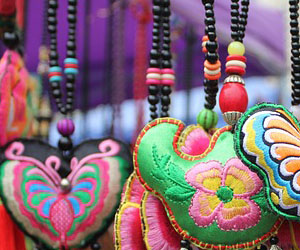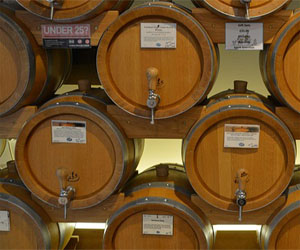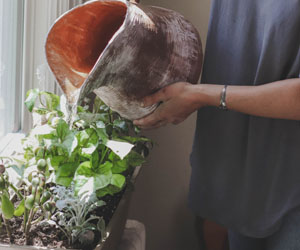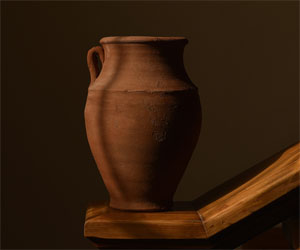


An Artistic Masterpiece In Thread

The satin stitch is one of the most versatile and elegant techniques in the world of embroidery. This classic embroidery stitch has been used for centuries to add smooth, shiny, and exquisite surfaces to fabric. The satin stitch is not just a simple act of sewing; it's an art form that requires precision, creativity, and patience.
Understanding The Satin Stitch: The satin stitch is characterized by its smooth, closely packed stitches that create a polished, satin-like surface on the fabric. It is often used for filling in designs, creating bold outlines, or adding fine details. To achieve a perfect satin stitch, embroiderers need to make sure the stitches are uniform in length and direction, creating a seamless, glossy appearance.
Versatility In Design: One of the satin stitch's most appealing features is its versatility. It can be used to create a wide range of designs, from simple geometric shapes to intricate, lifelike images. Whether you are working on floral motifs, animal figures, or abstract patterns, the satin stitch allows for artistic expression in various forms.
Achieving Dimension And Texture: While the satin stitch is celebrated for its smoothness, it also has the potential to add dimension and texture to embroidery projects. By altering the stitch length or layering stitches in different directions, artists can create the illusion of depth and detail, bringing designs to life.
The Importance Of Thread Selection: Thread selection is crucial when using the satin stitch. Traditional satin stitch threads include silk and rayon due to their sheen and luster. Modern options also include polyester threads that are known for their durability and colorfastness. Thread color choice plays a significant role in the overall impact of the satin stitch, enabling the creation of realistic gradients or bold, contrasting patterns.
Challenges And Techniques: While the satin stitch is beautiful, it's not without its challenges. Ensuring consistent stitch length and alignment requires practice and attention to detail. Embroiderers often use a laying tool or a frame to keep the threads smooth and untangled while stitching.
Applications In Embroidery:
The satin stitch is an integral part of embroidery, commonly used for various applications, including:
Monogramming: The satin stitch is perfect for creating elegant monograms on linens, clothing, and accessories.
Logo Embroidery: Many companies use the satin stitch to embroider logos on uniforms and promotional materials for a professional and polished appearance.
Couture Fashion: High-end fashion designers often employ the satin stitch to add intricate details, logos, or embellishments to their garments.
Decorative Embroidery: Home decor items such as throw pillows, curtains, and tablecloths often feature the satin stitch for its ability to create luxurious, eye-catching designs.
The satin stitch is a testament to the artistry that can be achieved with a needle and thread. It combines precision, creativity, and an eye for detail to transform simple fabric into exquisite works of art. Whether you're a seasoned embroiderer or a novice, the satin stitch offers endless possibilities for expression, making it a fundamental and captivating technique in the world of embroidery. It showcases the beauty that can be created by the simple act of stitching, one silky strand at a time.
From Vine To Glass
 Harvesting: The timing of the grape harvest is a critical decision. Harvesting too early or too late can significantly impact the final product. In traditional wine production, grapes were often handpicked, allowing for the careful selection of ripe, healthy clusters. However, modern mechanical harvesters have also become popular for their efficiency.
Harvesting: The timing of the grape harvest is a critical decision. Harvesting too early or too late can significantly impact the final product. In traditional wine production, grapes were often handpicked, allowing for the careful selection of ripe, healthy clusters. However, modern mechanical harvesters have also become popular for their efficiency.
Crushing And Pressing: Once the grapes are harvested, they undergo a process known as crushing, where they are gently broken to release the juice. Depending on the type of wine being produced, the grapes may be destemmed, meaning the stems are removed, or they may be pressed directly. The juice obtained from this process is known as "must."
Fermentation: Fermentation is a crucial stage in wine production, as it's where the grape juice transforms into wine. Yeasts are introduced to the must to convert the sugars into alcohol. The choice of yeast and fermentation method can significantly influence the wine's flavor profile.


Nurturing Your Inner Glow
 Nourishing From Within
Nourishing From Within
The skin is often considered a mirror of one's overall health, and health-conscious beauty acknowledges this fact. Consuming a balanced diet rich in vitamins, minerals, and antioxidants provides the essential building blocks for healthy skin and hair. Nutrient-dense foods, such as leafy greens, colorful fruits, and omega-3-rich fish, can contribute to a radiant complexion and lustrous locks.
Hydration is another cornerstone of health-conscious beauty. Proper hydration not only keeps the skin plump and glowing but also supports the body's natural detoxification processes. Drinking an adequate amount of water, along with herbal teas and hydrating foods, can help maintain skin's elasticity and clarity.
Clean And Mindful Skincare
While external beauty products aren't shunned in health-conscious beauty, the focus is on clean and mindful skincare choices. Avoiding products containing harmful chemicals and opting for natural or organic alternatives is essential. These choices help protect not only the skin but also the environment.
Consistent skincare routines, tailored to individual skin types and concerns, are also encouraged. These routines may incorporate natural ingredients such as aloe vera, tea tree oil, and chamomile for their soothing and healing properties. By being mindful of the ingredients in their beauty products, health-conscious beauty enthusiasts ensure that they are only putting the best on their skin.
From Earth To Artistry
 The History Of Clay Sculptures: The origins of clay sculptures can be traced back to prehistoric times when early humans fashioned clay into small figurines and objects. These early creations were often utilitarian, serving as fertility symbols or talismans. As civilizations advanced, clay sculptures gained more prominence, taking on religious, decorative, and artistic significance.
The History Of Clay Sculptures: The origins of clay sculptures can be traced back to prehistoric times when early humans fashioned clay into small figurines and objects. These early creations were often utilitarian, serving as fertility symbols or talismans. As civilizations advanced, clay sculptures gained more prominence, taking on religious, decorative, and artistic significance.
In ancient Greece, for example, clay was employed to create intricate figurines, pottery, and votive offerings. The renowned terracotta warriors of China's Qin Dynasty, dating back over 2,000 years, are an exceptional example of the artistry and craftsmanship that can be achieved through clay sculpture. These life-sized, meticulously detailed soldiers were created to accompany the first Emperor of China in his afterlife, attesting to the importance of clay sculptures in historical contexts.
The Techniques Of Clay Sculpting: Clay sculpting encompasses various techniques, with artists employing handbuilding, coiling, slab-building, and wheel-throwing methods. Handbuilding involves directly manipulating the clay by pinching, coiling, and smoothing to create the desired shape. Coiling uses rolled clay ropes to build forms, while slab-building cuts flat pieces of clay to construct sculptures. The potter's wheel is yet another approach, allowing for precision and symmetry in shaping clay.
The Firing Process: One of the defining aspects of clay sculptures is the firing process. After the artist shapes the piece, it is left to dry, followed by firing in a kiln. Kiln temperatures can vary, resulting in different finishes and properties of the sculpture. Low-temperature firing may create porous, unglazed pieces, while high-temperature firing can produce sturdy, vitrified sculptures.
 A Personal Touch: Handcrafted creations carry with them a unique, personal touch that simply cannot be replicated by machines. Each piece is a labor of love, a reflection of the artisan's skill, imagination, and passion. Whether it's a hand-carved wooden sculpture, a hand-stitched leather bag, or a hand-painted ceramic vase, the individuality of the artist is imprinted on the work, making it distinct and full of character.
A Personal Touch: Handcrafted creations carry with them a unique, personal touch that simply cannot be replicated by machines. Each piece is a labor of love, a reflection of the artisan's skill, imagination, and passion. Whether it's a hand-carved wooden sculpture, a hand-stitched leather bag, or a hand-painted ceramic vase, the individuality of the artist is imprinted on the work, making it distinct and full of character.
The Art Of Craftsmanship: Craftsmanship is at the heart of every handcrafted creation. Artisans invest time and effort honing their skills, often dedicating years to mastering their craft. This expertise shines through in the quality of their work. Every stitch, every brushstroke, every chisel mark is a testament to their commitment to perfection.
Uniqueness In Every Piece: In a world where identical, mass-produced items fill our lives, handcrafted creations stand as a beacon of uniqueness. Each piece is inherently one-of-a-kind, bearing its own imperfections, quirks, and distinctiveness. This individuality not only adds to the aesthetic value but also holds a certain sentimental charm for both the artist and the owner.
Illuminating The Profound Meanings
 Light And Hope: Candles are often seen as symbols of light piercing through darkness, representing hope and the triumph of good over evil. Lighting a candle can be an act of optimism, a way to banish the shadows, and a beacon of hope during challenging times.
Light And Hope: Candles are often seen as symbols of light piercing through darkness, representing hope and the triumph of good over evil. Lighting a candle can be an act of optimism, a way to banish the shadows, and a beacon of hope during challenging times.
Spirituality And Religion: Candles hold significant importance in many religious and spiritual practices. In Christianity, the lighting of candles in churches signifies Christ as the "light of the world." In Buddhism, candles are lit to symbolize the enlightenment of Buddha, while in Hinduism, they are used during various ceremonies to represent the divine presence.
Memorial And Remembrance: Candles are a powerful symbol of remembrance and reverence. Lighting a candle in memory of a loved one who has passed away is a common practice. It symbolizes that the memory of that person continues to shine in our hearts.
Celebration And Joy: Candles are used during celebrations to symbolize joy and festivity. Birthday candles, for example, signify the joy of another year of life. In many cultures, candles are an essential part of wedding ceremonies, representing the joy and union of the couple.
Decorating Your Herb Garden
 Symmetrical Or Geometric Layouts: Create symmetrical or geometric patterns in your garden, such as circular herb beds or rectangular planters. These structured designs can bring a sense of order and formality to your garden.
Symmetrical Or Geometric Layouts: Create symmetrical or geometric patterns in your garden, such as circular herb beds or rectangular planters. These structured designs can bring a sense of order and formality to your garden.
Herb Borders: Plant herbs along the edges of garden beds or walkways to define the space and create an organized, neat appearance.
Decorative Planters And Containers
Your choice of planters and containers can be a focal point in your herb garden:
Terracotta Pots: The rustic charm of terracotta pots adds a timeless elegance to your garden. Consider using pots of various sizes and shapes for a curated look.
Decorative Containers: Opt for unique and decorative containers like vintage crates, wooden barrels, or painted ceramics. These containers can be both functional and ornamental.
Hanging Baskets: Hang herbs in decorative baskets, allowing them to cascade gracefully. This not only saves space but also adds a touch of whimsy to your garden.
A Glimpse Into Monastery Brewing
 The Origins Of Monastery Brewing: The roots of monastic brewing can be traced back to medieval Europe, when monasteries were not only centers of spirituality but also hubs of agriculture and craftsmanship. Monks, skilled in cultivation and brewing, often brewed beer to support themselves and their communities. The monastic brewing tradition was born out of necessity and evolved into an art form celebrated for its unique and high-quality beers.
The Origins Of Monastery Brewing: The roots of monastic brewing can be traced back to medieval Europe, when monasteries were not only centers of spirituality but also hubs of agriculture and craftsmanship. Monks, skilled in cultivation and brewing, often brewed beer to support themselves and their communities. The monastic brewing tradition was born out of necessity and evolved into an art form celebrated for its unique and high-quality beers.
Brewing As A Form Of Self-Sufficiency: Monasteries were largely self-sustaining communities, and brewing became a valuable source of income for these religious orders. Monks brewed beer for their own consumption and to trade with neighboring communities. The high-quality beer produced within the monastery walls garnered a reputation for excellence and, over time, became an essential part of monastic life.
Brewing's Role In Monastic Life: For many monastic orders, brewing was not just a means of financial support; it was also deeply entwined with their way of life. Brewing was seen as a form of prayer, a means of connecting with the divine. Monks believed that by perfecting their brewing skills, they were glorifying God and serving their fellow humans through the creation of a sublime beverage.
The Trappist Brewing Tradition: One of the most well-known monastic brewing traditions is that of the Trappist monks, a strict Catholic religious order.
A Universal Craft With Unique Flavors
 Asia: The Cradle Of Ceramic Art
Asia: The Cradle Of Ceramic Art
The roots of pottery in Asia run deep, with China often hailed as the birthplace of ceramics. Chinese pottery traditions date back thousands of years, and they have left an indelible mark on the global ceramic landscape. Iconic Chinese porcelain, known for its delicate blue and white designs, is world-renowned. Japanese pottery, on the other hand, is celebrated for its earthy, rustic aesthetics and meticulous craftsmanship. Countries like Korea, Thailand, and Vietnam have their unique ceramic traditions, showcasing the diversity within Asian pottery.
Africa: The Rhythms Of Clay
Across the African continent, pottery is both a functional and artistic tradition. The terracotta pottery of the Nok civilization in Nigeria, dating back to 1000 BC, represents some of the earliest ceramic artifacts in sub-Saharan Africa. In many African cultures, women are the primary potters, carrying on age-old traditions of coiling and hand-building. Each piece reflects the cultural values, motifs, and symbols of the community it hails from.
The Americas: Ancient Craftsmanship
In the Americas, pre-Columbian civilizations made remarkable contributions to pottery. The intricate designs and remarkable clay work of the Moche, Inca, and Maya peoples provide a window into the artistic and functional aspects of their societies. Native American tribes have their own distinctive styles, using clay to create pottery that is deeply rooted in their spiritual and cultural practices.
Europe: A Tapestry Of Styles
Europe boasts a rich tapestry of pottery traditions. The majolica pottery of Italy, famous for its colorful glazes and ornate patterns, showcases the Mediterranean region's artistry. The Delftware of the Netherlands is cherished for its blue and white hand-painted pottery. Spain, with its talavera and sevillana ceramics, is known for its vibrant designs. Eastern Europe, including Poland, Hungary, and Russia, boasts unique styles reflecting both functional and artistic sensibilities.